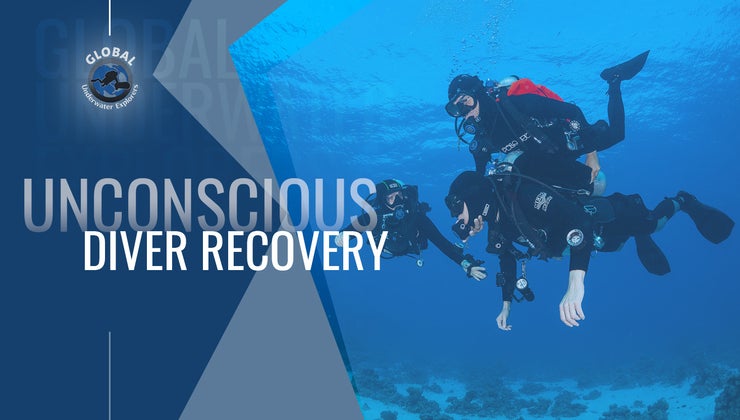I don't know who trained you but that is a dangerous procedure for both the rescuer and victim. If there are instructors actually teaching that kind of nonsense then someone needs to get them squared away before we have another fatality. You're correct that you should use your right hand to manage the unconscious diver's regulator and airway. But don't try to drag them to the surface by holding on and using the lift from your own BCD, or kicking up. At some point you're likely to lose your grip, resulting in the victim sinking again and the rescuer making an uncontrolled buoyant ascent.Training I got for this scenario was to position yourself behind unconscious diver, with right arm under their armpit holding the reg in their mouth (in case they are breathing, or come around during the ascent and start breathing) and ascend using my BC for lift for both of us. Between my BC and a kicking ascent, hope that would be enough lift. If not, I would have to add a small amount of air to their BCD I guess. Trying to keep the reg in their mouth, and manage air from two BCs on the way up might be too much task loading in my book.
The correct procedure is to get on top of the unconscious diver so that you're lying prone on top of their back tank(s). Dump gas from your own BCD (and drysuit if worn). Use the your left hand to control the victim's BCD (not your own) and establish the desired rate of ascent. Don't try to kick up. Some adjustments to the procedure may be needed if the victim is grossly overweighted or completely out of gas.
This is an advanced rescue procedure so please don't anybody go out and try to practice it based on my (oversimplified) comment. These skills need to be learned hands-on with a competent instructor. And realistically even if you do everything right the odds of successfully rescuing an unconscious diver are pretty low.




